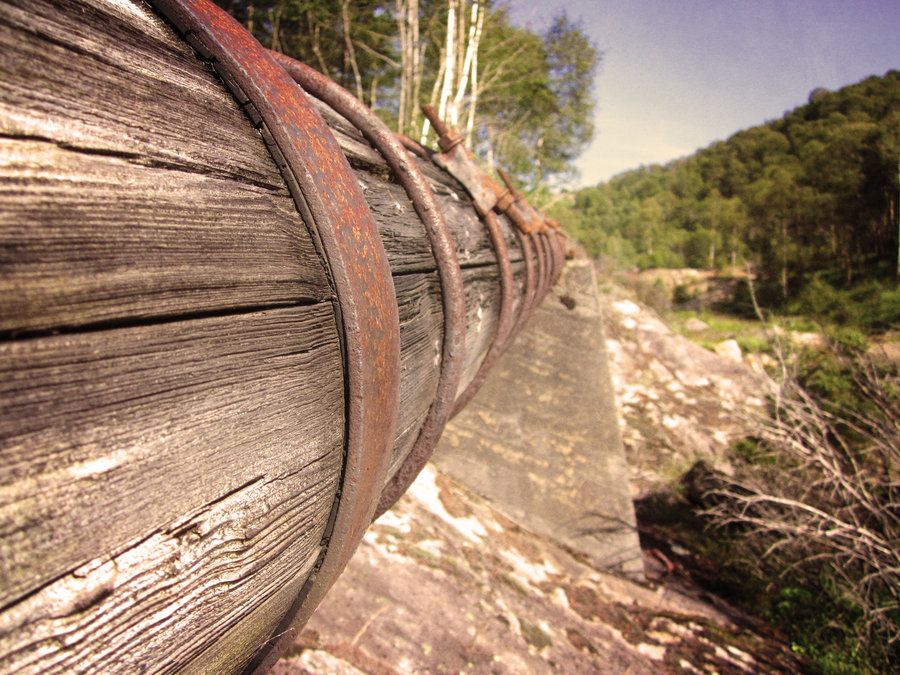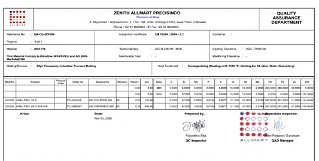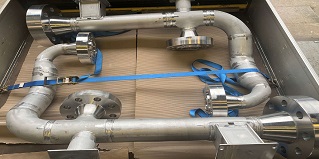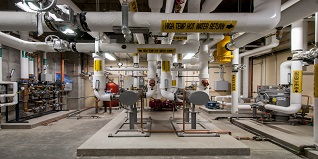Piping has been a part of human life for thousands of years. In earlier ages, piping was made from wood or clay. Water was used to transport over long distances by open stone channels which served as pipelines. Some of those channels were built nearly a thousand years ago, and they are still in use.
Although metallic piping is widely used today, nonmetallic piping has its own importance, In addition to traditional materials, mankind now has new combinations of nonmetallic piping materials to choose from.
In this article, you will learn about the common nonmetallic piping materials, both old and new. You will also learn about their application.
Table of Contents
Basic Nonmetallic Piping Materials
Followings are the basic nonmetallic piping materials:
- Clay
- Concrete
- Wood
- Glass
- Plastic
All of the listed piping materials are available in several forms and variations. For example, Clay pipes provide corrosion resistance. Concrete is reinforced and used where greater strength is required. Similarly, there are numbers of variations and applications, we will see further all the listed material one by one. Let’s start with Clay Pipes:
Clay Pipe
Clay pipe is made using clay and shale as raw materials. It comes in two types: Vitrified Clay Pipe and Unglazed Clay Pipe.

There is no vital difference between both. Vitrified pipes are coated (Glazed) and look glassy, they can safeguard against the infiltration of moisture, groundwater, and effluents. Whereas, Unglazed Clay Pipe can absorb moisture and do not have the capacity to safeguard against infiltration. Both types of pipe are easily available from 4″ to 36″ in diameter.
Clay piping is used to transport industrial wastes, sewage, and stormwater. Vitrified clay pipe is a corrosion-free product available for industrial and sewage wastes transportation. Vitrified clay pipe is environment-friendly, strong, and durable. Some pipes as old as 200 years are still delivering their operation. The rigidity of these pipes prevents problems like deflection and flattening when subjected to loads.
Liquid flow in clay pipes depends on gravity and not on pressure provided by external sources like pumps, They are laid at the slope. Unglazed clay pipe must be protected against the infiltration of ground moisture and soil contaminants. Clay pipes are joined together with a bell-and-spigot type joint.

Concrete Pipe
Concrete pipe is a very common pipe material, they are available in the following forms:
- Non-reinforced concrète pipe (Normally available upto 24″ in diameter)
- Reinforced concrete pipe (Normally available above 12″ in diameter and upto 144″)
- Reinforced and prestressed concrete pipe (Normally used in low pressure service line)
Although, nearly all concrete piping is used for transporting industrial wastes, sewage, and stormwater. But few of them are also used in service lines (low-pressure lines).
Except for the reinforced and prestressed pressure pipe, all the other concrete pipes are limited to very low-pressure use. Concrete is brittle in nature, this issue is overcome by reinforcing it with metal rods or mesh. The reinforced pipe is also used as a culvert. Concrète pipe like other piping systems is also covered by codes and standards, which specify the type of concrete pipe to be used, wall thickness, diameter, and pressures. The external pressure from the weight of the back-fill material above the concrète pipe is also considered while selecting the pipe.
Non-reinforced concrete pipe is manufactured in diameters from 4″ to 24″ inches. It is made with bell-and-spigot ends, as the clay pipe.

Reinforced and Prestressed Concrète Pipe:
When concrete piping is to be subjected to a heavy load or pressure, it is reinforced or strengthened by steel rods. Whereas, the first step in making a prestressed concrete pipe is to line a welded steel cylinder with concrete. When the lining has been set, the cylinder is tightly wrapped with high-strength wire. The steel cylinder, in turn, squeezes the concrete lining, placing it under compression. The outside of the pipe is concrete coated. The pipe has greater strength because the concrete has been compressed. This pipe can carry fluids with pressures of up to 600 psi (depends on the material specification). For moving the fluid, pumps are commonly used in reinforced and prestressed concrète piping systems. Either a lead-and-steel or a rubber-and-steel joint is used to join such pipes. This is a more advanced form of the bell-and-spigot joint.

Wood Pipe
Wooden bored water pipeline of small diameter has been largely used in England and in some of the Eastern cities, and when dug up, after many years of continuous service, it has been found as sound and clean as when they were put in service at an early stage.

But, It has been many years since wooden pipes are not in use, and definitely, they are not being used in industries, therefore, we will not talk about the wood pipe.
Glass Pipe
Glass pipes are used for their chemical resistance property, cleanliness, and the most important its transparency. They are widely used in the chemical and pharmaceutical industries. The very smooth surface of the glass pipe helps to maintain the cleanliness of systems. The hardness of the glass provides a safeguard in the case of abrasive fluid mediums.
Properties of Glass Pipe
The glass pipes have the following features:
- Corrosion resistance
- Anti stick
- Purity
- Flexibility
- Ease of cleaning
- Tough glass is not subject to liner collapse due to full vacuum at high temperatures.
Plastic Pipe
Different types of plastic materials are used in manufacturing plastic pipes. These materials display a wide range of properties that make these pipes an ideal choice for anything from pressurized water piping systems to gravity sewer systems.
Plastic pipes are lightweight, flexible, durable, and versatile. Plastic pipes are used in many of the same applications as traditional metal and ceramic piping. Plastic pipe offers significant savings in terms of both weight and installation. Which directly affects the cost.
Applications
Following are the major applications of plastic pipe
- Water plumbing piping system
- Sewage, drainage & wastewater piping system
- Fire fighting piping system
- Chemical handling piping system
- Natural gas distribution piping system
- Low pressure piping system
Materials
Common materials for plastic pipe are listed below:
- Polyvinyl Chloride (PVC)
- Chlorinated Polyvinyl Chloride (CPVC)
- High-density Polethylene (HDPE)
- Low-density Polyethylene (LDPE)
- Acrylonitrile butadiene styrene (ABS)
PVC pipe provides good flexibility, a smooth surface, and non-toxic qualities. Some PVC grades are used in food and chemical processing service lines.
CPVC pipe carries many of the same advantages and applications as PVC but it typically withstands higher pressure-temperature ratings.
HDPE pipe has good temperature resistance and is used in drainage structures and systems.
LDPE pipe is mostly used in industrial process components, laboratories, and sprinkler and drip irrigation systems.
ABS pipe has good chemical and creeps resistance as well as dimensional stability.

You may also like to read
What is Pickling & Passivation of Steel Pipes?
Pipeline Buoyancy: an Overview
Use of Floating and Fixed Roof Tanks
A Presentation on Expansion Loops
How to Find Minimum Radius of Pipeline Bends





HELLO Rehan Ahmad Khan, I am a corrosion engineer, do you have any information regarding the use of GRE (Glass Reinforced epoxy) pipes in the gas industry?
Working pressure around 80 Bars
Hello Mr. Chafi, Very soon I will write an article on GRE pipe.